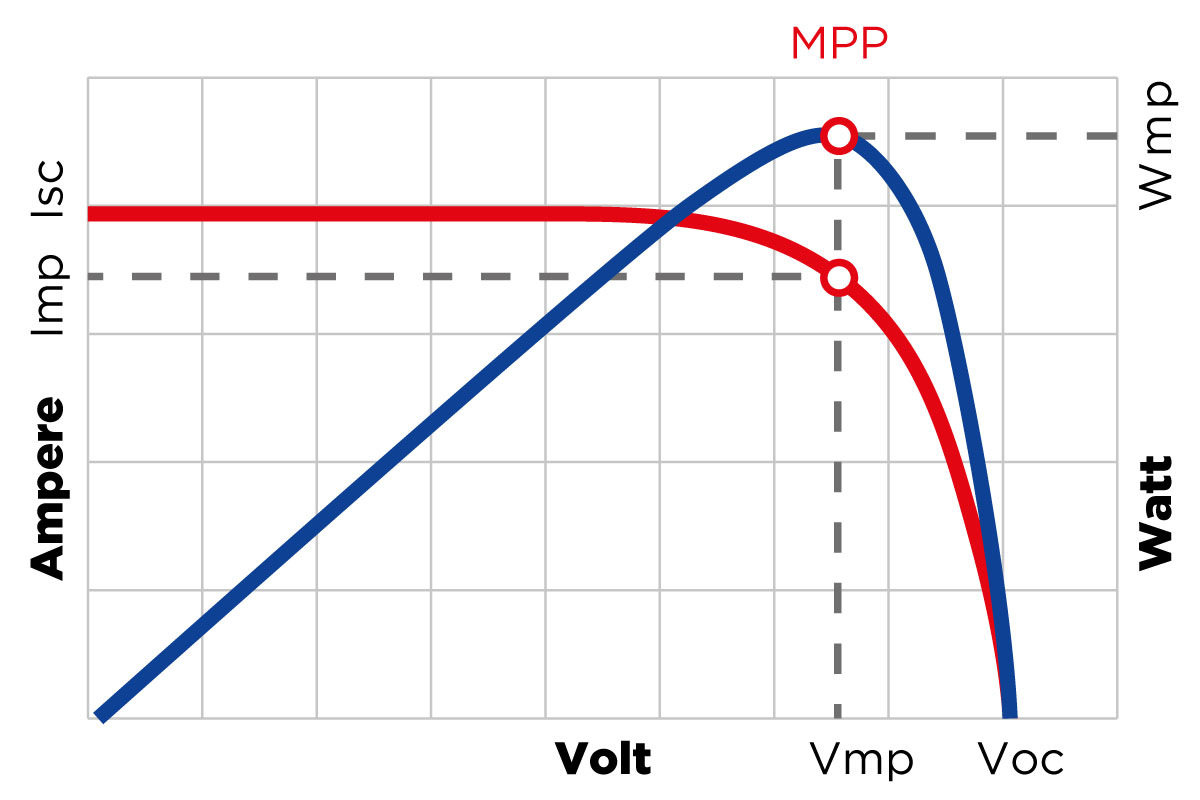When talking about the advantages of microinverters, we always mention “Multi-channel MPPT design keeps the microinverter running at maximum power at all times. ” In this article, we will unveil the mysteries of MPPT.
What is MPPT?
Maximum Power Point Tracking (MPPT) is a control technique commonly used in PV systems, and the goal of it is to harvest the most amount of energy as possible produced by the continuously-variable voltage and current outputs from solar panels.
Why is MPPT important?
PV systems have characteristic I-V (current-voltage) and P-V (power-voltage) curves. When the system works at a certain voltage (red point), the output power of the inverter reaches the maximum value. The point at which the solar panel operates to yield the highest power output is referred to as the Maximum Power Point (MPP).

However, this MPP changes as PV panels are affected by various factors that can reduce their power output. For example, partial shading can occur when some parts of the panels are covered by clouds, trees, buildings, or dust. Mismatching can happen when the panels have different characteristics, such as age, orientation, temperature, or degradation. This can cause some panels to produce less power than others, creating an imbalance in the system. Power losses can also occur due to the resistance of the wires, connectors, and inverters.
In such situations, multiple MPPs will show on the power-voltage curve of the panels, making it harder to find the optimal point. This is where MPPT comes into the picture.
How does MPPT work?
MPPT, with its super smart algorithms, keeps a close eye on panels’ output voltage and current. The algorithm can compare the power output of the panels with the previous values and determine whether to increase or decrease the voltage or current. It can also detect the changes in the environmental conditions, such as irradiance, temperature or shadows, and adjust accordingly. In this way, MPPT can extract more power from the panels than conventional controllers that use a fixed voltage or current, ensuring the system always performing at its best.
Under the same input power conditions, the number of MPPT channels in an inverter influences the power generation of a PV system. This effect becomes more significant when there are challenges like shading, varied panel orientations, or discrepancies in panel performance within the PV array. The greater the number of MPPT channels, the higher the accuracy of individual MPPT tracking, leading to faster dynamic response times and minimizing power generation losses.
TSUN microinverters employ a fully parallel structure, with each panel having an independent MPPT controller, ensuring that the power generation of one panel does not affect others. Taking the TSOL-MP3000 as an example, this microinverter can be connected to up to 6 panels simultaneously. Even if one panel experiences reduced power generation due to shading, the remaining panels can continue operating at maximum efficiency.
In the ever-evolving landscape of renewable energy, MPPT technology serves as the backbone of optimal energy conversion. When seamlessly integrated into microinverters, as demonstrated by TSUN, MPPT ensures solar panels consistently perform at their peak efficiency. As the world steers towards sustainability, embracing the prowess of MPPT and microinverters is poised to be a transformative step in harnessing the true potential of solar energy systems.





